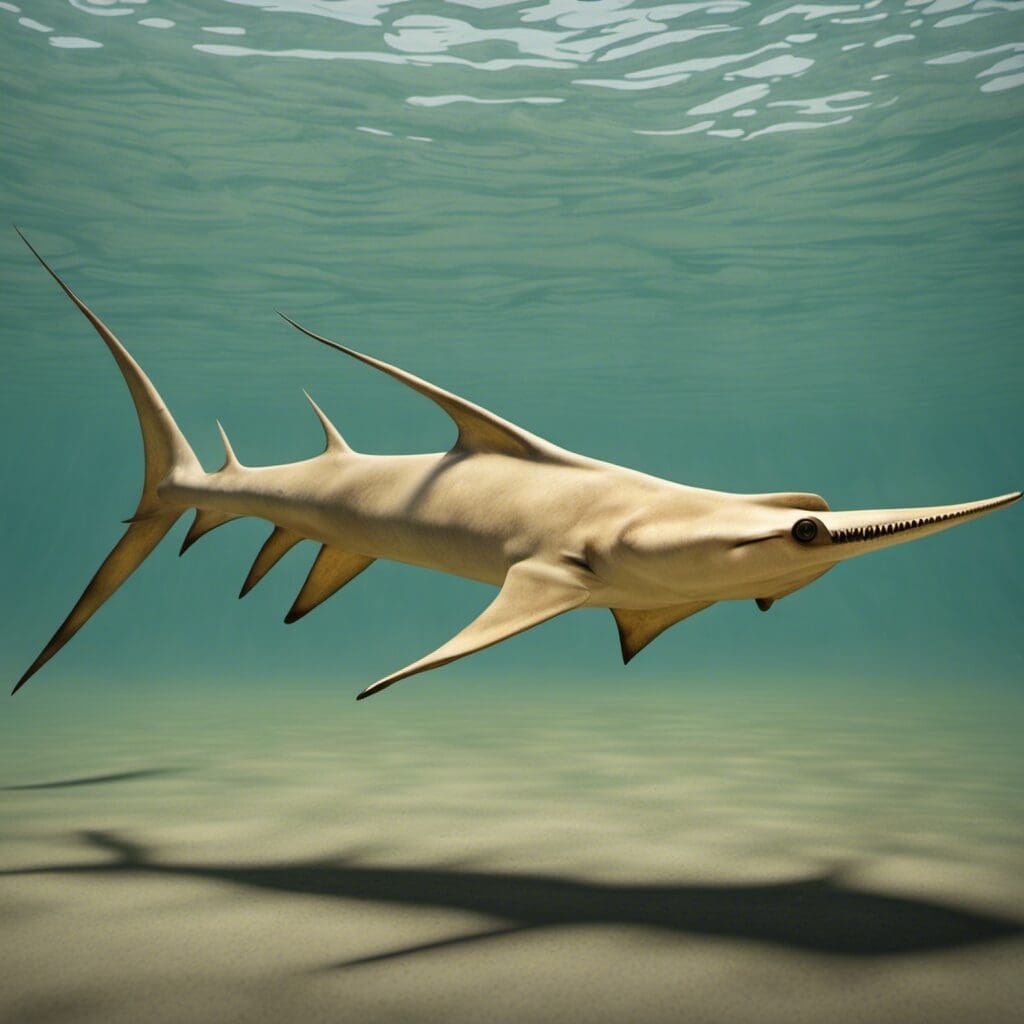Introduction
Scientifically known as Pristis pristis, the Largetooth Sawfish belongs to the family Pristidae, commonly identified by its distinctive saw-like rostrum or “snout.”
Conservation Status
Due to fishing pressures and habitat loss, the Largetooth Sawfish currently stands as Critically Endangered on the International Union for the Conservation of Nature (IUCN) Red List. Various conservation efforts are underway, including habitat preservation, fishing restrictions, and public educational initiatives to raise awareness about the species.
Statistics
| Measurement | Range | Average |
|---|---|---|
| Length | 16 – 23 feet | 20 feet |
| Weight | 770 – 1320 pounds | 990 pounds |
| Lifespan | Up to 30 years |
Distribution
Largetooth Sawfish are tropical species mostly found in the Atlantic Ocean, Gulf of Mexico, and Indo-Pacific waters. They exhibit no well-documented migration pattern. However, juveniles often move into freshwater rivers, returning to coastal waters as adults.
Habitats
The Largetooth Sawfish prefers tidal inlets, bays, estuaries, and river systems. With a depth range from surf line to 30 feet at most, they can withstand both salt and fresh water, often thriving in water temperatures around 70°F – 85°F.
When and Where to See
Sawfish are most commonly sighted during the summer. Their preference for shallow waters makes them more visible in the daytime.
Best Fishing Locations and Tips
While the Largetooth Sawfish is protected and should not be deliberately fished, knowing their locations can help avoid accidental interactions.
- Florida Bay, USA
- Belize Barrier Reef, Belize
- Gulf de Salinas, Cuba
- Amans river, Australia
- Rio Ramos, Mexico
When venturing into sawfish habitats, use heavy gear to allow quick release, minimize deep-hooking by using circle hooks and avoid casting in areas likely to be homes to sawfish.
How to Catch
Fishing for Largetooth Sawfish is illegal due to their conservation status. If one is accidentally hooked, it must be released immediately and unharmed.
Identification Guide
Largetooth Sawfish have a body similar to a shark but are identified by their distinctive saw-like rostrum, which they use to detect and disable prey. Their skin is brownish-grey, and they boast symmetrical pectoral fins. They are often mistaken for Smalltooth Sawfish but can be distinguished by the position of their first dorsal fin aligning perfectly with their pelvic fins.
Additional Information
Largetooth Sawfish rely on electroreceptors to find food, which includes small fish and crustaceans. Threats include habitat degradation, entanglement in fishing gear, and the illegal trade for their distinctive rostra. Historically, they hold immense cultural significance, often depicted in Aboriginal drawings and viewed as a symbol of the creation period in some indigenous cultures.
References and Further Reading
In keeping yourself updated about the Largetooth Sawfish and its conservation status, sources like Florida Museum (https://www.floridamuseum.ufl.edu/discover-fish/species-profiles/pristis-pristis/) and FishBase (http://www.fishbase.org/summary/6017)are highly recommended.All links open in a new tab.
Note: Respect all fishing laws and conservation efforts dedicated to preserving this magnificent species.

